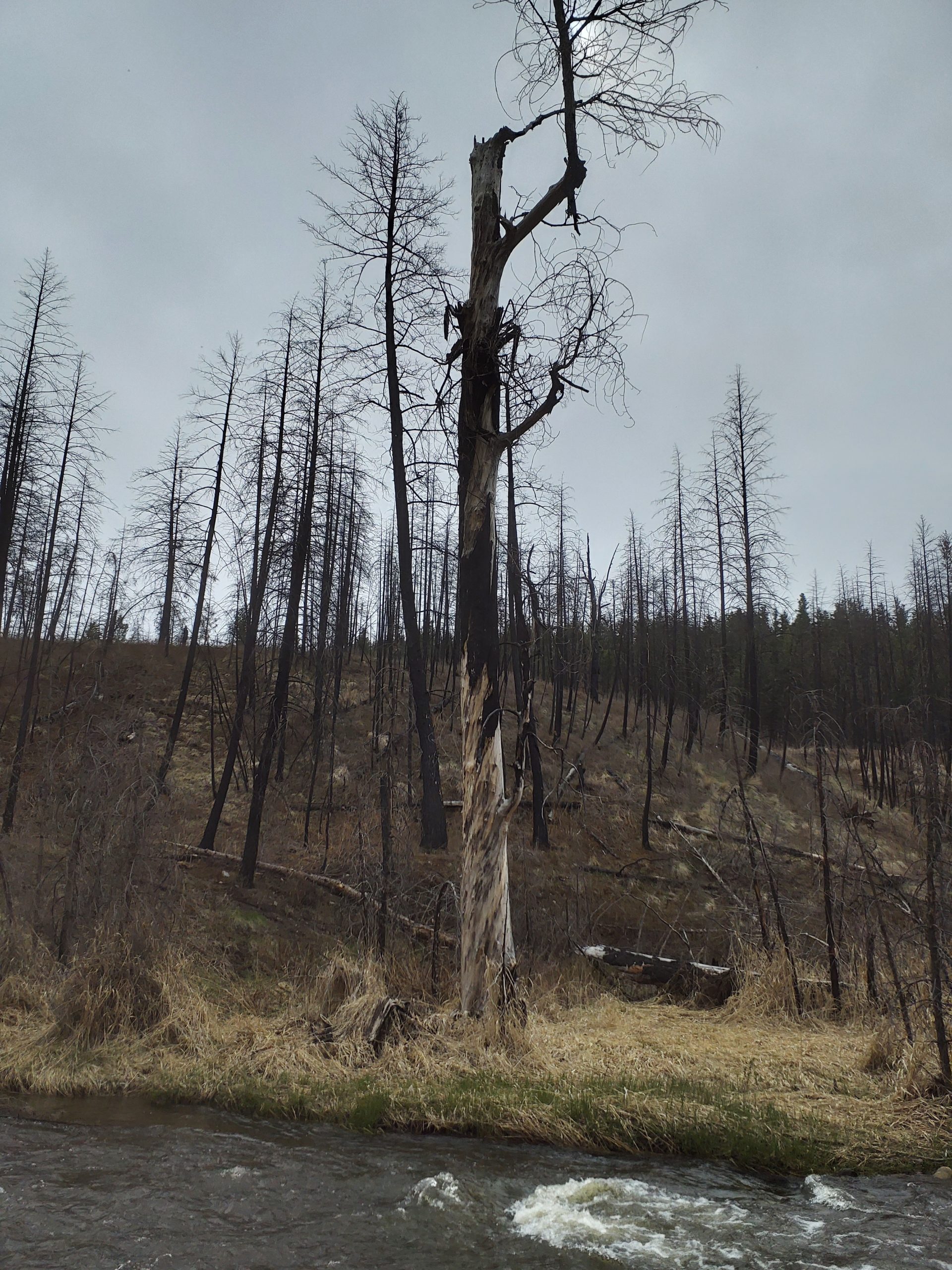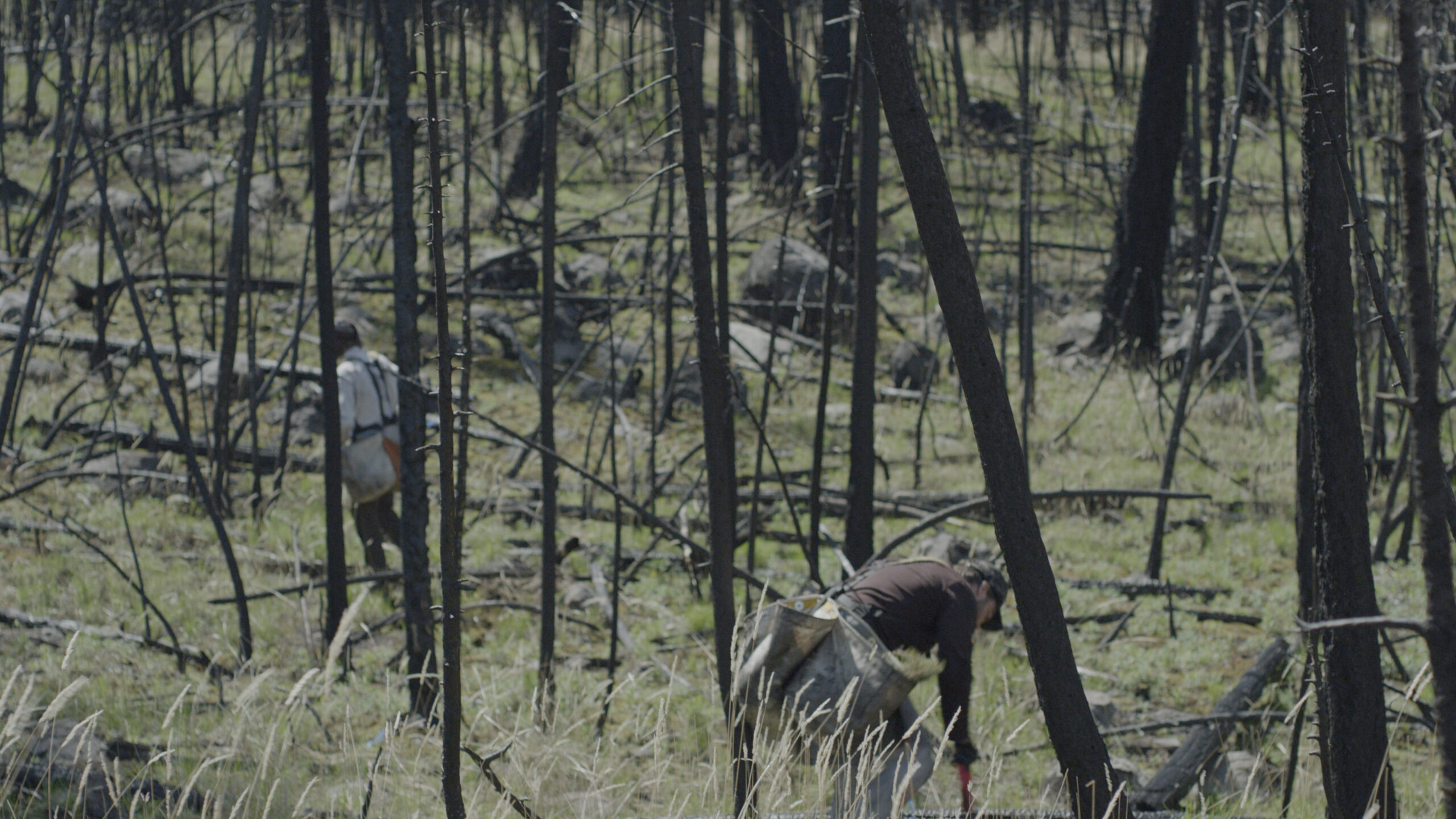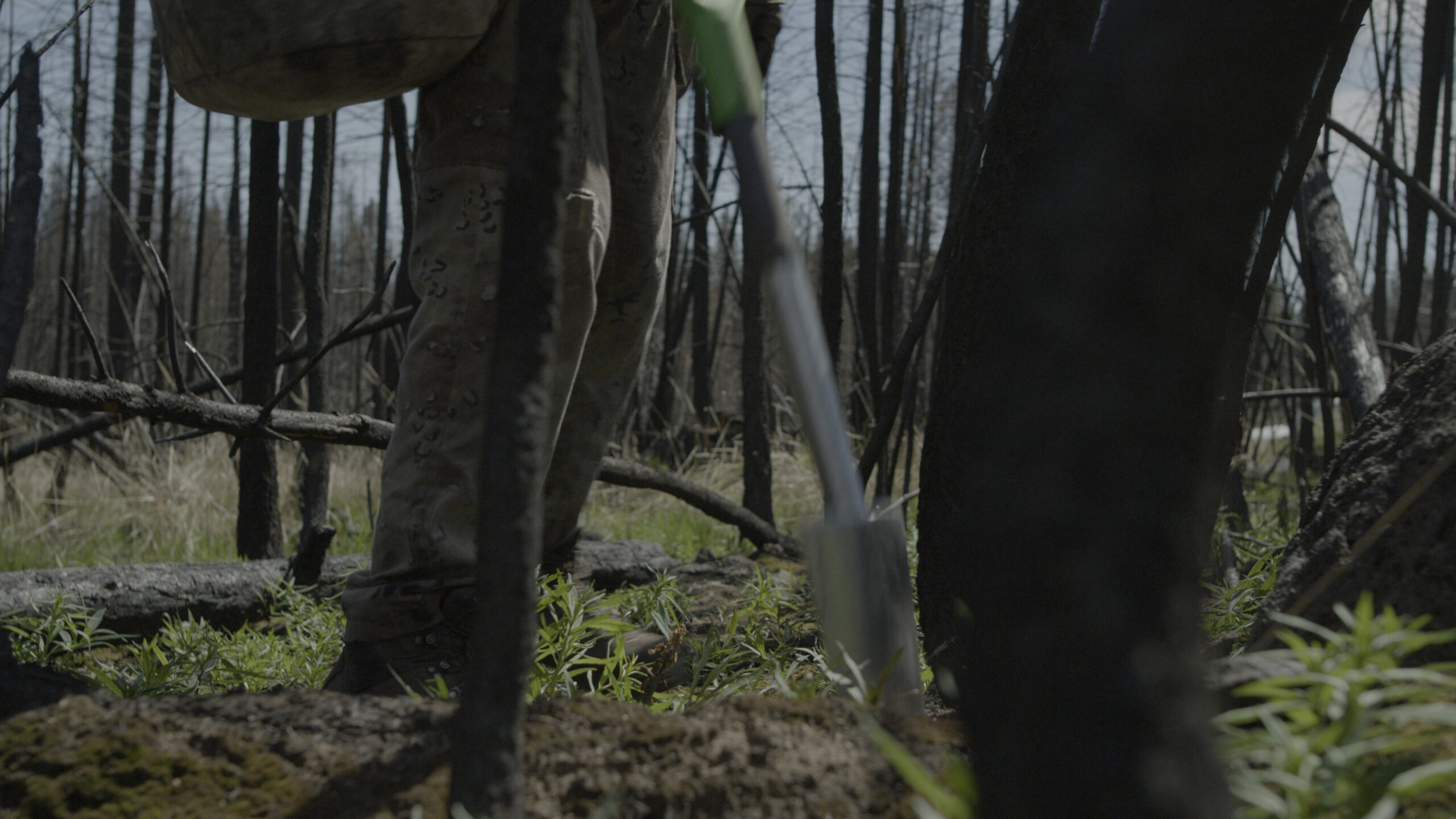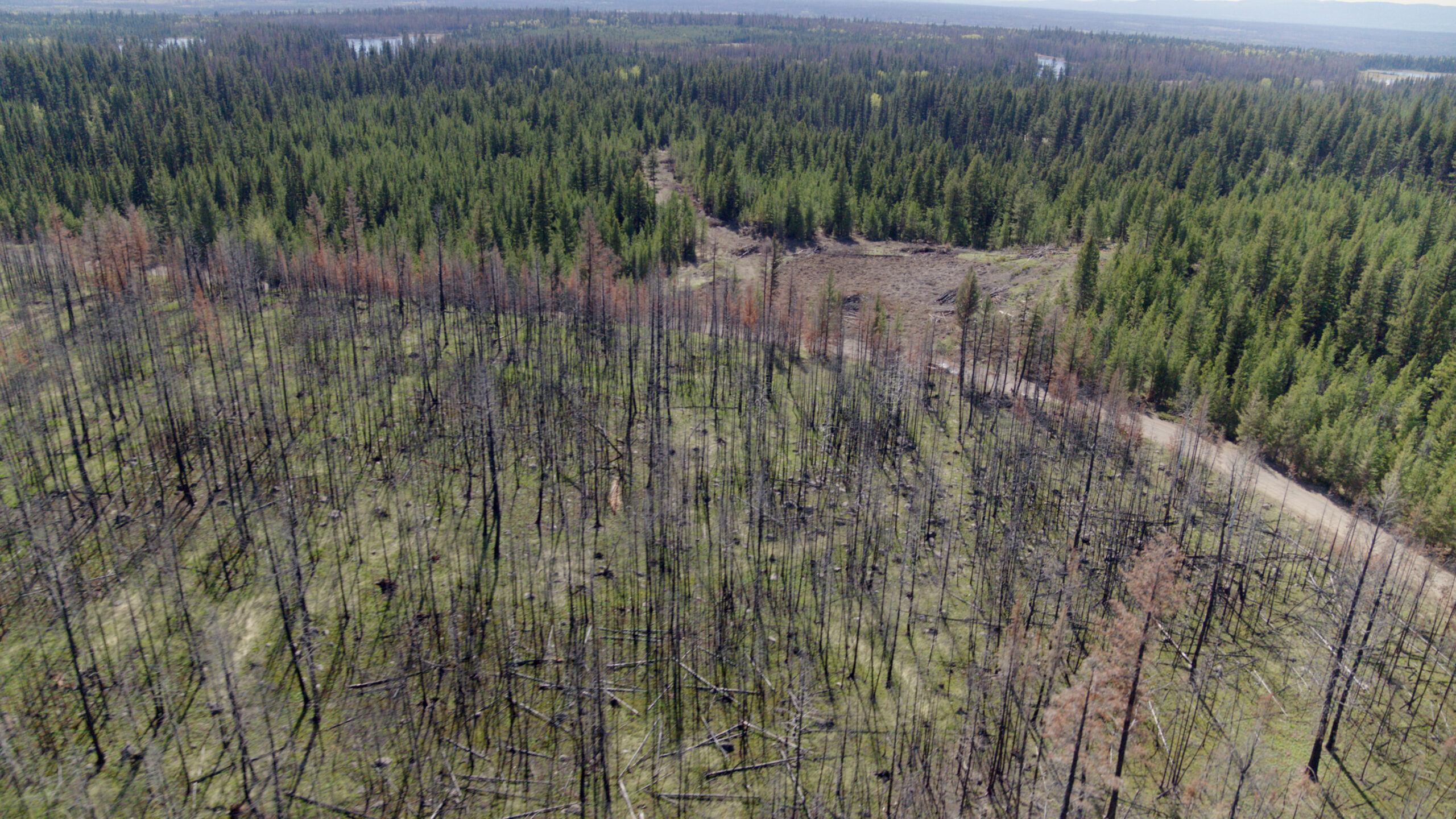Here’s why Indigenous-led wildfire restoration works
As Canada faces its worst wildfire season in recorded history, with “abnormally hot weather” forecast for the summer, the safety and wellbeing of many Canadian communities and forest ecosystems remain at risk. But the Secwepemcúl’ecw Restoration and Stewardship Society’s (SRSS) ongoing reforestation efforts shows a path forward through Indigenous-led wildfire restoration.

In 2017, nearly 200,000 hectares of Secwépemc territory near Kamloops, B.C. was burned in the Elephant Hill wildfire. That, alongside other nearby fires, destroyed vast areas of forest habitat and left the land vulnerable to soil erosion and landslides. In some areas, the soil was so badly scorched that natural regrowth of trees and plants was impossible.
WWF-Canada has since been supporting SRSS in a multiyear partnership that advances Indigenous knowledge systems and approaches to forest management. To find out more about why Indigenous-led wildfire restoration works, we spoke with SRSS CEO, Angela Kane.
What was the Elephant Hill fire like for you and other members of the Secwépemc communities?
It was actually a really traumatic time. To watch those plumes getting closer every day, listening to the helicopters, day in and day out, it almost feels like a war-torn type time. You feel like you’re constantly in survival mode. It’s a devastating experience. Some of our community members lost their homes, their way of life. They rely on the land to practice their traditions and their culture — and when those fires came through, that was gone.
What are some of your ambitious goals for restoration of fire-impacted forests on Secwépemc territory?
When we first started out as a group, eight [Secwépemc] communities came together to talk about wildfire recovery and what that looked like. We built relationships with provincial government and started our first project of repairing critical salmon habitats within the burned-out areas.
Through that project, we identified the importance of wildfire restoration from an Indigenous perspective — that is, not putting back for economic purposes, but for ecological purposes. Too often, we see [forest] licensees or large companies putting back pine and fir for economic opportunities down the road. But what they’re not doing is putting back a forest the way it used to be. We’re looking at medicines, food sources, wildlife habitats. We wanted to look at getting back to an original way of life, or a historic forest system, and that has been our biggest focus over the last four years.

With that, we’ve grown to looking at other ways that we can help support the regeneration and restoration of our riparian areas. We’re seeing more and more that with wildfires come landslides and disruptions to our critical stream areas. We’re also looking at restoring beavers to our streams [as] a natural way to restore streams and habitats. We’re looking at restoration project by project, but also from a watershed-based perspective.
How are cultural values and food security being employed as guiding principles in the restoration and stewardship activities?
Culturally significant food sources and plants have been a top priority for us. We’re finding that in harvesting [after] wildfires, a lot of food sources, plants and medicines are being lost. Our goal is to try to restore as many cultural plants as we can, not only for now but for future generations. This is typically the area where their grandparents or elders have shown them how to forage for food and medicines for thousands of years, so it’s extremely important that we put these back because it is their way of life. The forest is their pharmacy and their food supply.
Why are community-led efforts to plant more diverse trees species, including deciduous trees, so important?
We’re finding that a healthy ecosystem is a balanced ecosystem. The right mixture of species, whether it’s coniferous or deciduous, both play a huge role in a healthy ecosystem. When deciduous species are in place, we find that wildfires don’t burn as hot. [Deciduous trees] are like a fire break — they help slow the fire down and, in some cases, will help stop the fire depending on how much water is absorbed in those trees at the time.

Can you tell us about your growing seed collection project and what that means for future growth of the program and inclusion of deciduous species?
One the key elements that we identified when we started our restoration work was the access to deciduous seeds. There’s not a lot of people out there collecting these seeds — you have to wait for the right time of year to collect them, they need to be processed, dried, sorted and then stored for future use, and not all of them are going to germinate.
It’s crucial for us, if we want to be able to access those species, to collect our own seeds. We’re in the process of looking at getting training for our community members in that process. We’re looking at creating our own collection program so that we can collect our own seeds specific to the area, and to our communities.

A lot of times, communities will have an inventory of specific plants and medicines that they traditionally use within that area. Identifying those — and actually going out and collecting before an event happens — will allow us access to seeds that we may never get access to again.
A wildfire destroyed one of the SRSS’s seed storage facilities. Can you tell us about that and what your plans are to reduce that threat?
There’s not enough [growing and storage] facilities within the province to support the amount of restoration work that needs to happen. With the ongoing threat of wildfires and landslides, access to seedlings is going to get more and more difficult. What we’re hoping to do is partner with a nursery that has already been helping us with our growing and help them expand. We’re also talking to them about putting in a cold storage facility that we [would] have right there on site.
Our goal is to have access to our seedlings, to have cold storage, and to have our own seed collection process so that we’re a one-stop shop, and we don’t need to look outside for access to the plants we need for restoration. That is our end goal, to be self-sufficient.
What are some of the other projects between SRSS and WWF-Canada? What’s next for SRSS?

WWF has been amazing in helping us build out our restoration projects. They’ve helped us with a carbon initiative, and the software that they’re designing there will help us in the work that we continue to do. WWF is currently helping us to plant 250,000 trees this year, and 500,000 trees next year. We’re looking at creating an ongoing program with the World Wildlife Fund where we can start planting into 2025/26, and we’re looking to plant over a million trees with our big goal by 2030 of ten million trees.
That is a lofty goal, but we’ve come a long way so far so I’m pretty confident that we can reach that or be pretty darn close to it at the end. There are opportunities [with WWF-Canada] for our nursery and for our cold storage [facility], so they are going to be a partner for us for some time.

